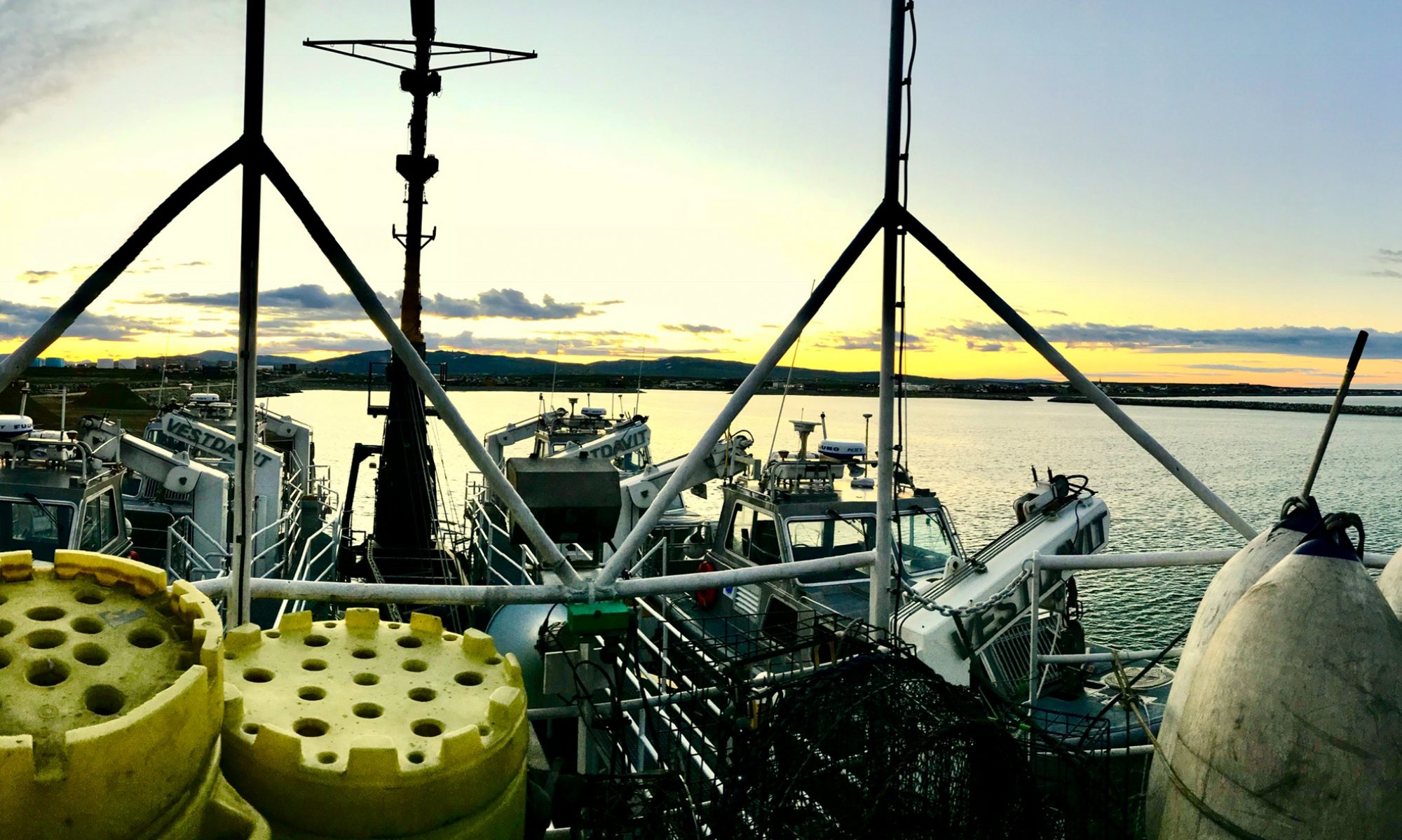NOAA Teacher at Sea
Marilyn Frydrych
Onboard NOAA Ship Delaware II
September 15-25, 2008
Mission: Atlantic Herring Hydroacoustic Survey
Geographical area of cruise: New England Coastal Waters
Date: September 15, 2008

Weather Data from the Bridge
41.27 degrees N, 70.19 degrees W
Partly Cloudy
Wind out of the W at 19 knots
Dry Bulb Temperature: 26.0 degrees Celsius
Wet Bulb Temperature: 20.9 degrees Celsius
Waves: 2 feet
Visibility: 10 miles
Sea Surface Temperature: 21.6 degrees Celsius
Science and Technology Log
The purpose of my trip on the Delaware II was to find interesting venues for presenting various math lessons to students at Pikes Peak Community College where I teach and to students of different grades and ages at the K-12 public schools in Colorado Springs. We left on time yesterday, though I was unaware of the departure. I had been busy unpacking my things and making my bed. Then I decided to learn my way around the boat. I happened to look through a porthole and noticed we were about 25 yards from the peer. The NOAA Corps officer, ENS Charlene Felkley, taking us out had used the bow thruster to move us away from the dock. It was so smooth that I hadn’t noticed any movement. I thought that strange considering the size of the Delaware 2. We steamed all day toward our station about 250 miles east of Cape Cod.

After we were out of the channel we started our drills. We’d all been given a station billet stating where our stations were for emergencies. The first was a fire drill followed by an abandon ship drill. I started to my station at the stern for the fire drill, but one of the engineers redirected me to the bow stating that the fire was in the stern. About 15 of us gathered in the bow. We had all carried our survival suit, life vest, long sleeve shirt, hat and gloves, and anything we thought we might need. I brought as extras my sunglasses and a bottle of water. When we were dismissed, about 15 minutes later after the officers and crew had practiced using the fire hoses by spaying over the side of the boat, we proceeded to the stern where those of us who had not been on the last cruise dressed in our survival suits. I soon learned that the easiest way to put on a survival suit is to stretch the legs and boots out on the deck, sit down in its middle, draw its legs onto your legs, stand up and finish with the upper body. Pulling the zipper up proved quite difficult. The hood enveloped my face and I could feel its suction. The suit is designed to keep the cold water away from your body. It was well insulated but still in icy cold waters would only protect you for about an hour.

Personal Log
That evening we spotted some whales spouting. It was migration time so we must have been crossing their path as they headed south. We were told they were probably humpback whales because of their size and the shape of their spouts. I saw a couple fins, but mostly just their massive bodies surfacing. I learned about “fin prints” the spot where their fin flattens the water. The little ripples, prevalent everywhere on the ocean’s surface, seem to be smoothed out at the spot where the fin hits the water. These areas were about 6 ft by 4 ft and glistened smooth in the setting sun. We watched spout after spout for about 2 hours.





